 W
W"And you are lynching Negroes" are catchphrases that describe or satirize Soviet Union responses to United States criticisms of Soviet human rights violations.
 W
WThe Bamboo Curtain was the Cold War political demarcation between the Communist states of East Asia, particularly the People's Republic of China, and the capitalist and non-Communist states of East, South and Southeast Asia. To the north and northwest lay the Communist states of China, the Soviet Union, North Vietnam, North Korea, and Mongolia. To the south and east lay the capitalist and non-Communist countries of India, Pakistan, Japan, Indonesia, Malaysia, Singapore, the Philippines, Thailand, Taiwan, South Korea, British Hong Kong, and Portuguese Macau. Before the Indochina Wars the non-Communist bloc included French Indochina and its successor states South Vietnam, Laos, and Cambodia. However, after the wars the new countries of Vietnam, Laos, and Democratic Kampuchea became Communist states. In particular, following the Korean War, the Korean Demilitarized Zone became an important symbol of this Asian division.
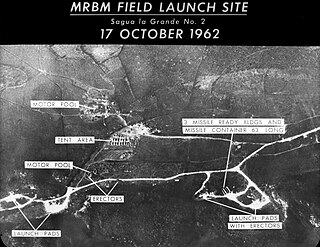 W
WBrinkmanship is the practice of trying to achieve an advantageous outcome by pushing dangerous events to the brink of active conflict. The tactic occurs in international politics, foreign policy, labor relations, contemporary military strategy, and high-stakes litigation. The maneuver of pushing a situation with the opponent to the brink succeeds by forcing the opponent to back down and make concessions. That might be achieved through diplomatic maneuvers, by creating the impression that one is willing to use extreme methods rather than concede.
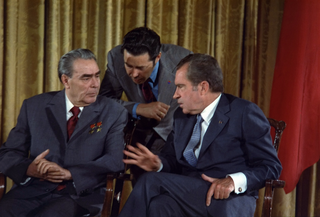 W
WDétente is the relaxation of strained relations, especially political, by verbal communication. The term, in diplomacy, originates from around 1912 when France and Germany tried unsuccessfully to reduce tensions.
 W
WDeterrence theory refers to scholarship and practice on how threats or limited force by one party can convince another party to refrain from initiating some course of action. The topic gained increased prominence as a military strategy during the Cold War with regard to the use of nuclear weapons and is related to but distinct from the concept of mutual assured destruction, which models the preventative nature of full-scale nuclear attack that would devastate both parties in a nuclear war. The central problem of deterrence revolves around how to credibly threaten military action or nuclear attack despite its costs.
 W
W"Duck and cover" is a method of personal protection against the effects of a nuclear explosion. Ducking and covering is useful at conferring a degree of protection to personnel located outside the radius of the nuclear fireball but still within sufficient range of the nuclear explosion that standing upright and uncovered is likely to cause serious injury or death. In the most literal interpretation, the focus of the maneuver is primarily on protective actions one can take during the first few crucial seconds-to-minutes after the event, while the film by the same name and a full encompassing of the advice, also caters to providing protection up to weeks after the event.
 W
WFlexible response was a defense strategy implemented by John F. Kennedy in 1961 to address the Kennedy administration's skepticism of Dwight Eisenhower's New Look and its policy of massive retaliation. Flexible response calls for mutual deterrence at strategic, tactical, and conventional levels, giving the United States the capability to respond to aggression across the spectrum of war, not limited only to nuclear arms.
 W
WHollanditis was a term coined in 1981 by the American historian Walter Laqueur. It was used to describe the wave of pacifist neutralism that swept through the Netherlands in the first half of the 1980s and which influenced similar grass roots movements in other European countries. It was the biggest popular movement in the Netherlands in the post-war era and it came as a response to the confrontational politics of the Reagan administration in the US that were seen as a threat to the peaceful co-existence of the 1970s.
 W
WThe Iron Curtain was a political boundary dividing Europe into two separate areas from the end of World War II in 1945 until the end of the Cold War in 1991. The term symbolizes the efforts by the Soviet Union (USSR) to block itself and its satellite states from open contact with the West and its allied states. On the east side of the Iron Curtain were the countries that were connected to or influenced by the Soviet Union, while on the west side were the countries that were NATO members or nominally neutral. Separate international economic and military alliances were developed on each side of the Iron Curtain. It later became a term for the 7,000-kilometre-long (4,300 mi) physical barrier of fences, walls, minefields, and watchtowers that divided the "east" and "west". The Berlin Wall was also part of this physical barrier.
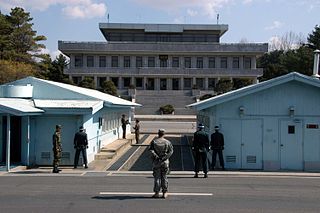 W
WThe Korean Demilitarized Zone is a strip of land running across the Korean Peninsula near the 38th parallel north. The demilitarized zone (DMZ) is a border barrier that divides the Korean Peninsula roughly in half. It was established to serve as a buffer zone between the countries of North and South Korea under the provisions of the Korean Armistice Agreement in 1953, an agreement between North Korea, China and the United Nations Command.
 W
WLinkage was a foreign policy that was pursued by the United States and championed by Richard Nixon and Henry Kissinger in the 1970s détente, during the Cold War. The policy aimed to persuade the Soviet Union to co-operate in restraining revolutions in the Third World in return for concessions in nuclear and economic fields. Soviet interventions occurred in various conflicts such as the Angolan Civil War, the Mozambican Civil War, and the Ogaden War, while many revolutions still occurred in Third World countries, undermining the policy.
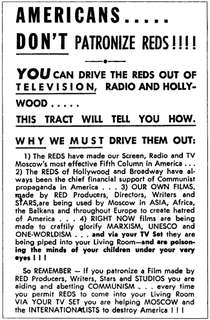 W
WMcCarthyism is the practice of making accusations of subversion and treason, especially when related to communism and socialism. The term originally referred to the controversial practices and policies of U.S. Senator Joseph McCarthy (R-Wisconsin), and has its origins in the period in the United States known as the Second Red Scare, lasting from the late 1940s through the 1950s. It was characterized by heightened political repression and persecution of left-wing individuals, and a campaign spreading fear of alleged communist and socialist influence on American institutions and of espionage by Soviet agents. After the mid-1950s, McCarthyism began to decline, mainly due to Joseph McCarthy's gradual loss of public popularity and credibility after several of his accusations were found to be false, and sustained opposition from the U.S. Supreme Court led by Chief Justice Earl Warren on human rights grounds. The Warren Court made a series of rulings on civil and political rights that overturned several McCarthyist laws and directives, and helped bring an end to McCarthyism.
 W
WThe Moscow–Washington hotline is a system that allows direct communication between the leaders of the United States and the Russian Federation. This hotline was established in 1963 and links the Pentagon with the Kremlin. Although in popular culture it is known as the "red telephone", the hotline was never a telephone line, and no red phones were used. The first implementation used Teletype equipment, and shifted to fax machines in 1986. Since 2008, the Moscow–Washington hotline has been a secure computer link over which messages are exchanged by a secure form of email.
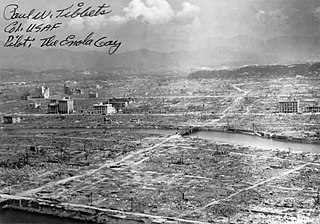 W
WMutual assured destruction (MAD) is a doctrine of military strategy and national security policy in which a full-scale use of nuclear weapons by two or more opposing sides would cause the complete annihilation of both the attacker and the defender. It is based on the theory of deterrence, which holds that the threat of using strong weapons against the enemy prevents the enemy's use of those same weapons. The strategy is a form of Nash equilibrium in which, once armed, neither side has any incentive to initiate a conflict or to disarm.
 W
WRefusenik was an unofficial term for individuals—typically, but not exclusively, Soviet Jews—who were denied permission to emigrate, primarily to Israel, by the authorities of the Soviet Union and other countries of the Eastern bloc. The term refusenik is derived from the "refusal" handed down to a prospective emigrant from the Soviet authorities.
 W
WSputnik 1 was the first artificial Earth satellite. It was launched into an elliptical low Earth orbit by the USSR on 4 October 1957 as part of the Soviet space program. It orbited for three weeks before its batteries died and then orbited silently for two months before it fell back into the atmosphere on 4 January 1958.
 W
WThe Strategic Defense Initiative (SDI), derisively nicknamed the "Star Wars program", was a proposed missile defense system intended to protect the United States from attack by ballistic strategic nuclear weapons. The concept was announced on March 23, 1983 by President Ronald Reagan, a vocal critic of the doctrine of mutually assured destruction (MAD), which he described as a "suicide pact". Reagan called upon American scientists and engineers to develop a system that would render nuclear weapons obsolete.
 W
WThe term "Third World" arose during the Cold War to define countries that remained non-aligned with either NATO or the Warsaw Pact. The United States, Canada, Japan, South Korea, Western European nations and their allies represented the "First World", while the Soviet Union, China, Cuba, Vietnam and their allies represented the "Second World". This terminology provided a way of broadly categorizing the nations of the Earth into three groups based on political and economic divisions. Since the fall of the Soviet Union and the end of the Cold War, the term Third World has decreased in use. It is being replaced with terms such as developing countries, least developed countries or the Global South. The concept itself has become outdated as it no longer represents the current political or economic state of the world and historically poor countries have transited different income stages.
 W
WThe Warsaw Treaty Organization (WTO), officially the Treaty of Friendship, Cooperation and Mutual Assistance, commonly known as the Warsaw Pact (WP), was a collective defense treaty signed in Warsaw, Poland between the Soviet Union and seven other Eastern Bloc socialist republics of Central and Eastern Europe in May 1955, during the Cold War. The Warsaw Pact was the military complement to the Council for Mutual Economic Assistance (CoMEcon), the regional economic organization for the socialist states of Central and Eastern Europe. The Warsaw Pact was created in reaction to the integration of West Germany into NATO in 1955 per the London and Paris Conferences of 1954.
 W
WThe Western Bloc, also known as the Free Bloc, Capitalist Bloc and the American Bloc, was a coalition of the countries that were allied with the United States, a member of NATO, opposed the Soviet Union and Warsaw Pact, and advocated Anti-Communism during the Cold War 1947-1991. The latter were referred to as the Eastern Bloc. The governments and the press of the Western Bloc were more inclined to refer to themselves as the Free World or the First World, whereas the Eastern Bloc was often called the "Communist World" or "Second World".